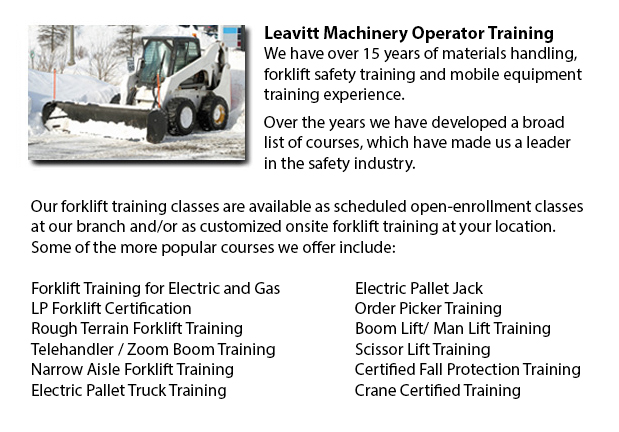
London Skid Steer Ticket - The lift arms on the skid-steer loader are located beside the driver along with pivots at the rear of the driver's shoulders. These features makes the skid-steer loader different compared to the conventional front loader. Due to the operator's proximity to moving booms, early skid loaders were not as safe as conventional front loaders, specially throughout the operator's exit and entry. Today's' modern skid-steer loaders have various features to protect the driver like fully-enclosed cabs. Similar to several front loaders, the skid-steer model could push materials from one site to another, is capable of loading material into a trailer or a truck and can carry material in its bucket.
Operation
Generally a skid-steer loader can be utilized on a jobsite rather than a big excavator by digging a hole from the inside. First, the skid-steer loader digs a ramp leading to the edge of the desired excavation, and then it uses the ramp to excavate material out of the hole. As the excavation deepens, the machinery reshapes the ramp making it steeper and longer. This is a particularly functional way for digging beneath a building where there is not sufficient overhead clearance for the boom of a big excavator. Like for example, this is a common situation when digging a basement under an existing structure or house.
There is much flexibility in the attachments that the skid steer loaders are capable of. Like for instance, the traditional bucket of many of these loaders could be replaced with various attachments which are powered by the loader's hydraulic system, consisting of tree spades, sweepers, mowers, snow blades, cement mixers, pallet forks and backhoes. Some other popular specialized buckets and attachments consist of tillers, stump grinders rippers, wheel saws, snow blades, trenchers, angle booms, dumping hoppers, wood chipper machines and grapples.
History
The 3-wheeled front end loader was invented in 1957, by Louis and Cyril Keller in their hometown of Rothsay, in the state of Minnesota. The Keller brothers created this machinery to be able to help mechanize the method of cleaning in turkey barns. This particular equipment was light and compact and consisted of a back caster wheel which enabled it to turn around and maneuver within its own length, enabling it to perform similar tasks as a traditional front-end loader.
In the year 1958, the Melroe brothers of Melroe Manufacturing Company in Gwinner, N.D. purchased the rights to the Keller loader. They hired the Keller brothers to continue refining their loader invention. The M-200 Melroe was the result of this particular partnership. This particular model was a self-propelled loader that was introduced to the market in nineteen fifty eight. The M-200 Melroe featured a two independent front drive wheels, a rear caster wheel, a 12.9 HP engine and a 750 lb lift capacity. By 1960, they changed the caster wheel with a back axle and introduced the very first 4 wheel skid steer loader that was referred to as the M-400.
The M-400 immediately became the Melroe Bobcat. Often the term "Bobcat" is utilized as a generic term for skid-steer loaders. The M-440 was powered by a 15.5 HP engine and had 1100 lb rated operating capacity. The company continued the skid-steer development into the middle part of the nineteen sixties and launched the M600 loader.
-
London Crane License
London Crane License - Crane operators ought to be "credentialed", that means they must possess a crane operator license or certification. Credentialing is considered a mandatory governmental requirement in order to practice as a crane operator. Obta... More -
London Heavy Equipment Operator Training
London Heavy Equipment Operator Training - Training facilities which offer quality standards in the industry and not just provide field performing tasks but added equipment training are highly sought after. Accredited schools provide students the kno... More -
Telehandler Training in London
Telescopic handlers usually referred to as telehandlers for short, are a very popular piece of heavy construction machinery. They are usually utilized in the agriculture and construction industries. These machines have maximum reaching capacity and c... More -
London Boom Lift Certification
London Boom Lift Certification - Elevated work platforms allow maintenance operations and work to be carried out at heights which could not be reached by any other means. Workers utilizing boom lifts and scissor lifts can learn how to safely operate... More -
London Fall Protection Ticket
London Fall Protection Ticket - Fall-related accidents are the number one reason of death within the construction industry. The potential for fall incidents really increases based upon the kind of work that is being completed within your workplace. T... More -
London Forklift Safety Training
London Forklift Safety Training - Anybody who wants to operate a lift truck should take a forklift safety training program to become a certified forklift truck operator. There are several ways to obtain forklift training. Programs are provided throug... More -
Operator Safety Training, Re-Qualification Training, In-House Instructor Training in London
Lift trucks are used in nearly all warehouse operations and in boat yards and in industrial construction sites. The reach feature of a forklift is a vital component used in various applications like for instance whenever a shelving system is being us... More -
London Boom Lift Safety Training
London Boom Lift Safey Training - Boom lifts are a type of elevated work platform or aerial lifting device that are commonly utilized in construction, industry, and warehousing. Boom lifts can be used in practically any surroundings due to their vers... More

Forklift Certification London
TOLL FREE: 1-888-254-6157
London, Ontario
forkliftcertificationlondon.com
Email Us
About Us


